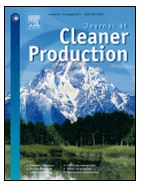Mining-induced displacement and resettlement: a critical appraisal
Physical displacement, relocation and resettlement are widely acknowledged as posing enormous social risk. For over four decades, scholars, campaigners and project-affected people have sought to highlight the effects of development-induced displacement and resettlement (DIDR). Increasingly, the generic set of international standards that are used to manage cases of DIDR are being tested by the unique challenges posed by mining-induced displacement and resettlement (MIDR). In this article the authors provide a critical appraisal of current thinking and practice relating to MIDR. Findings indicate that MIDR is largely characterised by factors that occur in 'brownfield' project scenarios; even when the initial displacement commences in otherwise 'new' mining developments. The article identifies five critical and distinguishing factors associated with MIDR. These factors are explored in light of contemporary policy debates surrounding the mining industry, including 'consent', 'negotiated agreements' and overall effectiveness of existing social safeguards in regulating industry practice. These factors are explored in light of contemporary policy debates surrounding the mining industry, including 'consent', negotiated 'agreements' and overall effectiveness of existing social safeguards in regulating industry practice.
Publisher: Journal of Cleaner Production
Region: Australia
Type: Article

